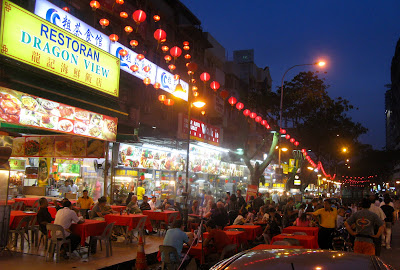 "Get ready to Party" A common scream from the announcers as the annual Chingay parade began.
"Get ready to Party" A common scream from the announcers as the annual Chingay parade began.This year marked the largest two days of parades celebrating Chingay since it began on the streets of Singapore in 1973.
There were thousands who paid 25 to 45 Singaporean Dollars each for a seat in the main stands where the parade began. Thousands more lined the parade route and everyone was encouraged to participate in the festive mood. Frenzied shouting and cheering is part of the celebration.
The evolution of Chingay is synonymous with the growth of Singapore with it's social and ethnic diversity. The parade itself began in 1972 mainly as a celebration of the Chinese Lunar New Year and was made up almost entirely of Chinese entrants.
 Chingay participation expanded to include groups from around the world, and over the years there have been entrants from Europe, Tahiti, Brail, Japan, Indonesia, Korea, Ghana, and many more.
Chingay participation expanded to include groups from around the world, and over the years there have been entrants from Europe, Tahiti, Brail, Japan, Indonesia, Korea, Ghana, and many more..jpg)




























































